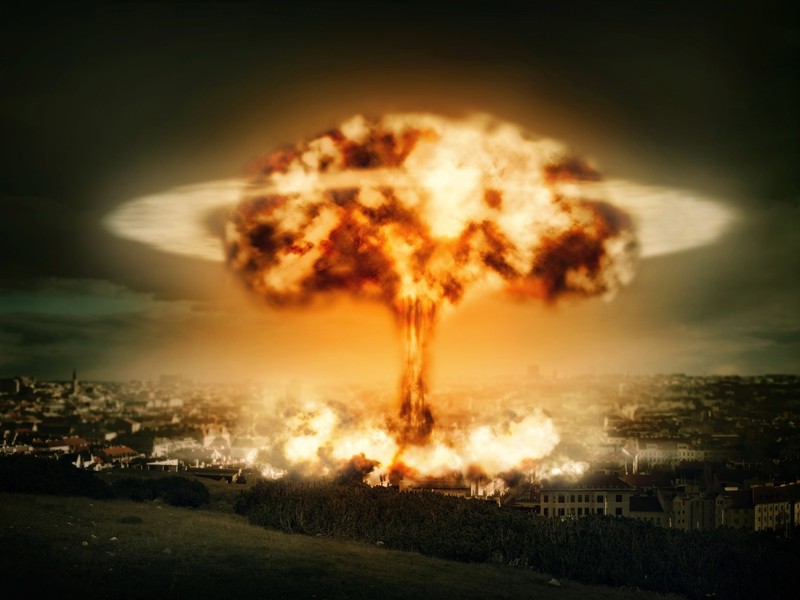Do you have any idea what to do in the event of a nuclear attack? Do you know where to go? Do you know how to treat thermal burns or radiation sickness that result from being in close proximity of a blast? If you're like me, most of you answered no to any or all of these questions. For that reason, we need a dedicated organization tasked with keeping us safe in the event of a nuclear event.
Proposal for the formation of the Nuclear Global Health Workforce
Such a group could bring together nuclear and non-nuclear technical and health professionals for education and training, and help to meet the preparedness, coordination, collaboration and staffing requirements necessary to respond to a large-scale nuclear crisis.
What would a Nuclear Global Health Workforce need to be prepared to manage? Look back at the legacy of the atomic bombings of Hiroshima and Nagasaki, as well as the nuclear accidents like Chernobyl and Fukushima.
Approximately 135,000 and 64,000 people died, respectively, in Hiroshima and Nagasaki. The great majority of deaths happened in the first days after the bombings, mainly from thermal burns, severe physical injuries and radiation.
Over 90% of the doctors and nurses in Hiroshima were killed and injured, and therefore unable to assist in the response. This was largely due to the concentration of medical personnel and facilities in inner urban areas. This exact concentration exists today in the majority of American cities, and is a chilling reminder of the difficulty in medically responding to nuclear events.
Very few medical personnel today have the skills or knowledge to treat the kind and the quantity of injuries a nuclear blast can cause. Health care workers would have little to no familiarity with the treatment of radiation victims. Currently, it has not been worked out how medical systems in affected areas are supposed to cope with the overwhelming numbers of patients from an urban nuclear detonation. This makes it that much more important to have an effort like the Nuclear Global Health Workforce to work to address and help nations prepare for these overwhelming events.
Decisions to evacuate at-risk populations must be made within hours, but plans for and criteria to evacuate are lacking. And the scale of these evacuations and potential resettlement is tremendous.
For instance, within a few weeks after the Chernobyl accident, more than 116,000 people were evacuated from the most contaminated areas of Ukraine and Belarus. Another 220,000 people were relocated in subsequent years. But thousands continue to live in areas classified by Ukrainian and Belarussian authorities as strictly controlled zones, where chronic radioactive cesium contamination remains a problem.
The day after the Fukushima earthquake and tsunami, over 200,000 people were evacuated from areas within 20 kilometers (12 miles) of the nuclear plant because of the fear of the potential for radiation exposure.
The evacuation process was plagued by misinformation, inadequate and confusing orders and delays in releasing information. Elderly and infirm residents were left in areas near the plant, and hospitalized patients were not always taken where they needed to go. All of these troubles led to a loss of public trust in the government.
In a hypothetical low-yield (10 kiloton) nuclear bomb over Washington, D.C., only limited evacuations are planned. Despite projections of 100,000 fatalities and about 150,000 casualties, the casualty-producing radiation plume would actually be expected to be confined to a relatively small area. People upwind would not need to take any action, and most of those downwind, in areas receiving relatively small radiation levels (from the point of view of being sufficient to cause radiation-related health issues), would need to seek only “moderate shelter.”
A Nuclear Global Health Workforce could start to lay out plans for how to rapidly respond to such an attack and project whether and what sort of evacuation plans would be needed.
What’s the risk of another Hiroshima or Nagasaki?
Today, the risk for a nuclear exchange—and its devastating impact on medicine and public health worldwide—has only escalated. Nuclear weapons are spreading to more nations, and international relations are increasingly volatile. The developing technological sophistication among terrorist groups and the growing global availability and distribution of radioactive materials are also especially worrying.
It may not be surprising to find out that very few healthcare professionals know how to deal with the injuries that would be inherent in a nuclear event; they don't come across them very often. What is suprising are the odds that if there were a nuclear attack, we would lose about 90% of our healthcare professionals in the initial event. That leaves very few people who know how to keep us alive. It is also terrifying to learn that governments around the world are so vastly unprepared for evacuations in a nuclear event, despite their own research saying how impending such a threat is.
It's good hear that there are some officials looking to put together a team to handle healthcare and evacuations in the event of such an emergency.
Head to The Conversation for read more of this highly informative article and we hope to see results because of it.

I live in Portland Or, we have a fighter base. So you know we’re catching 50-75 megatons. Not survivable.
Is anyone truly ready for a nuclear disaster?
Where do I find this training in my area? It’s nice to know that someone is worried enough but, where is the training?
Nope!
Just so yall know. Nuclear war the only ones living are the feds and the elite the rest of us are toast
Why Are You Capitalizing Every Word Like A Dumb Liberal? It Takes More Effort FFS.
Say, how about we elect peolpe that go and talk first before that whip out the gun?
I like the optimism, but if nukes drop so do we.